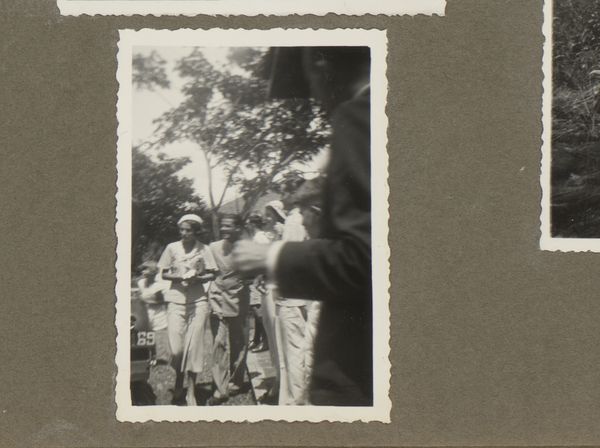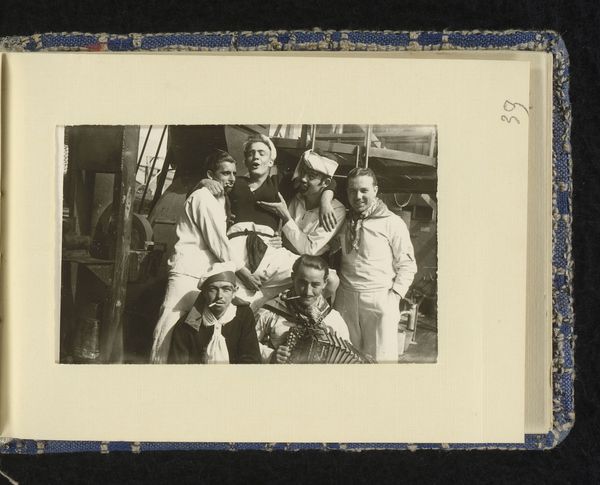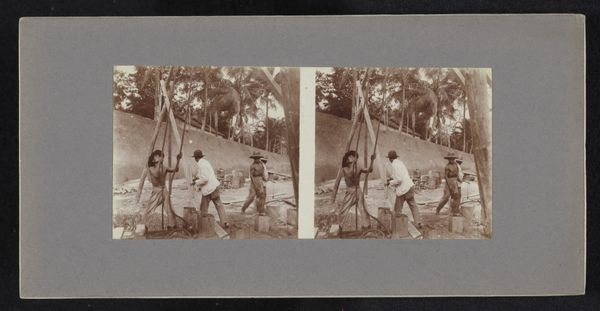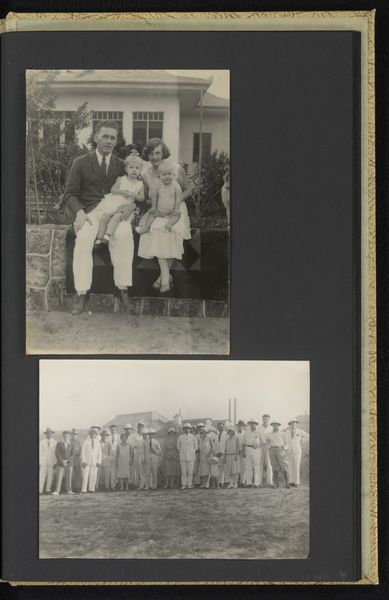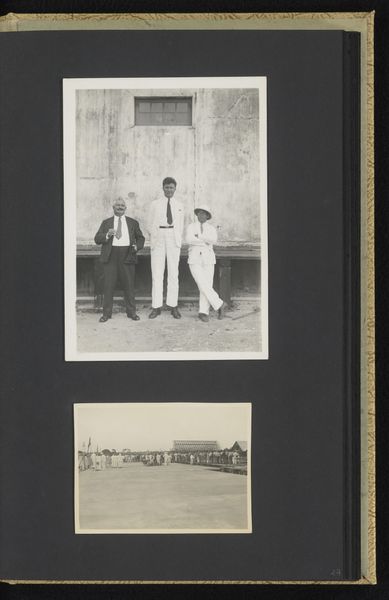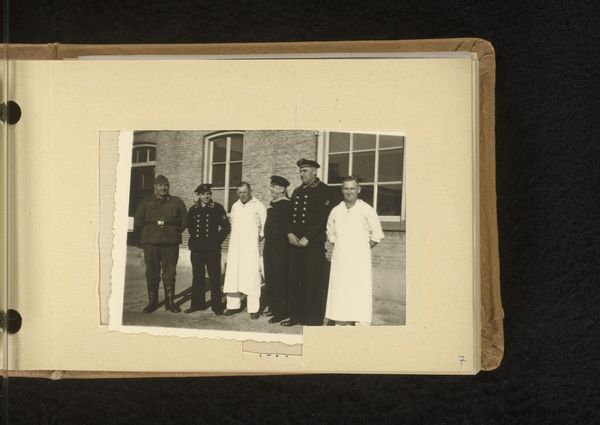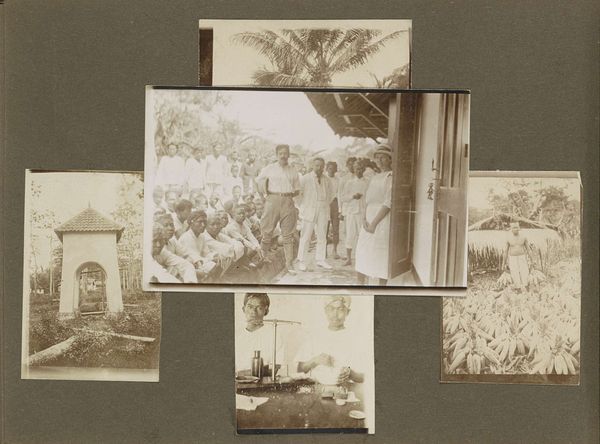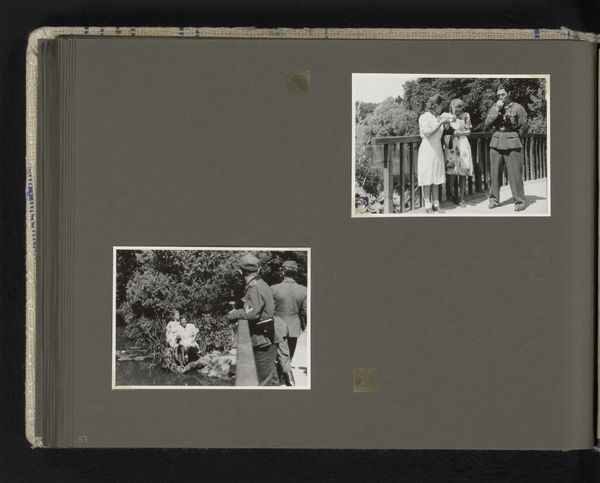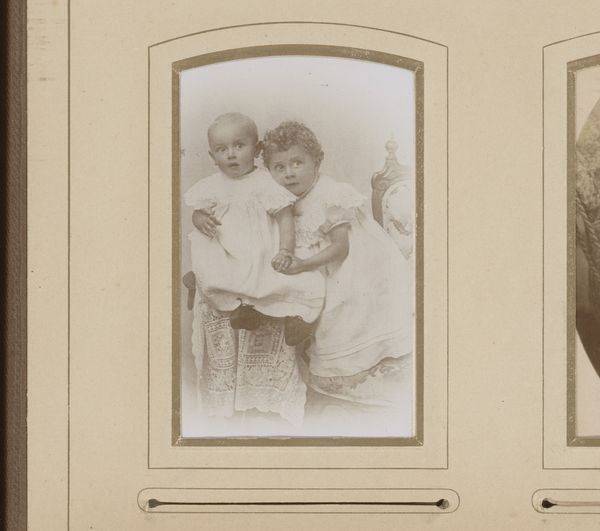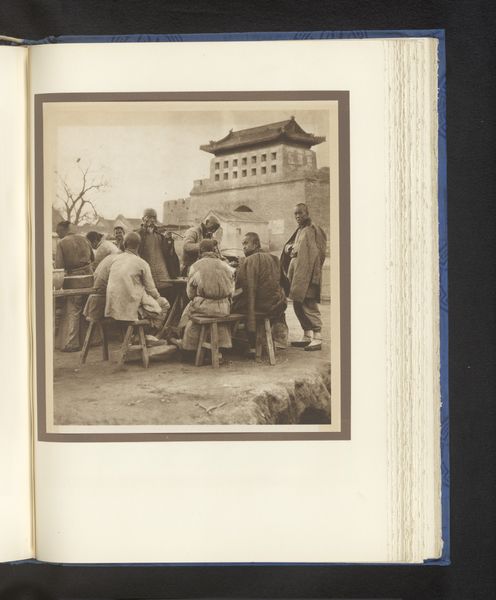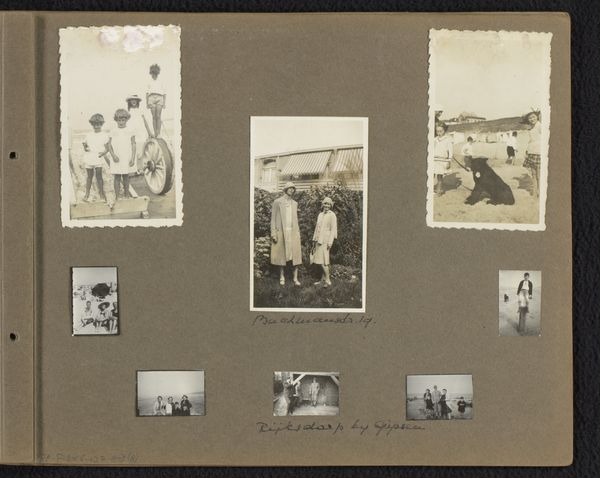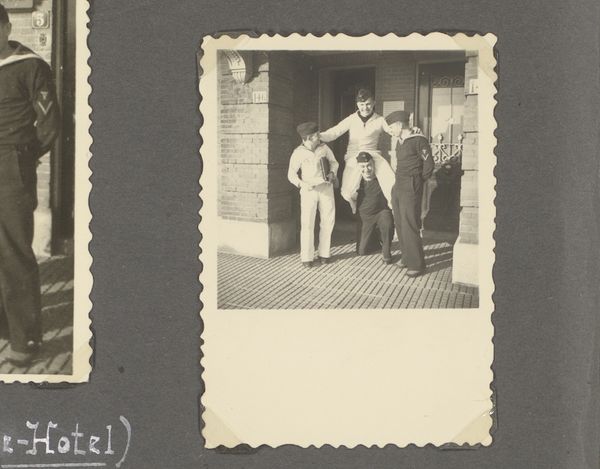
photography, gelatin-silver-print
#
portrait
#
african-art
#
landscape
#
street-photography
#
photography
#
gelatin-silver-print
Dimensions: height 85 mm, width 142 mm, height 125 mm, width 210 mm
Copyright: Rijks Museum: Open Domain
Editor: Here we have "Drie jongens op het plein Djemaa El Fna, Marrakech," a gelatin silver print, possibly from 1927, by A.G.A. van Eelde. I’m immediately struck by how it captures this sense of everyday life, almost a casual observation. What stands out to you when you look at it? Curator: What pulls me in is the way the image functions as a memory portal. Djemaa el-Fna is itself a palimpsest of cultural memory, layered with centuries of storytelling, trade, and social interaction. How does the image preserve this cultural symbolism? The white clothing acts, on one hand, as a shroud for their bodies and, on the other hand, calls our attention to who the photographer may have viewed as the "other" that inhabited the space. Editor: So the photograph itself is an act of remembering but perhaps not necessarily one that empowers its subjects? Curator: Precisely! The framing, the contrast between the subjects and the distant building – everything feels deliberately composed to highlight the photographer's perspective, framing their interpretation. Consider the repeating lines—the belts across their chests mirroring the sharp rooflines of the architecture in the background. Is this a symbol of cultural order being imposed? Editor: I hadn’t considered that before, that every element is a conscious decision shaping a particular narrative. The boys become representative, almost archetypal. Curator: And does this reading change your initial interpretation? Is there more "constructedness" now visible? Editor: Definitely. I initially saw the photograph as a candid snapshot, but understanding the potential symbolic intent changes everything. Curator: It prompts us to examine the underlying codes of visual culture in what we naively assume is simple record keeping. It is through recognizing this layering of meaning, embedded in what appears documentary, that we may decolonize our viewing habits and recover repressed narratives within images of Africa. Editor: This makes me think differently about the power that images, and photography specifically, possess in perpetuating cultural memory.
Comments
No comments
Be the first to comment and join the conversation on the ultimate creative platform.
